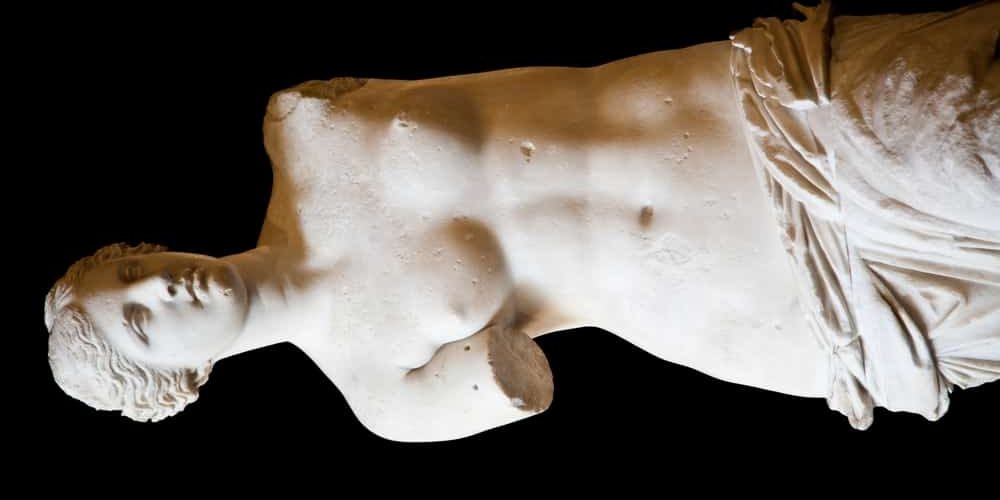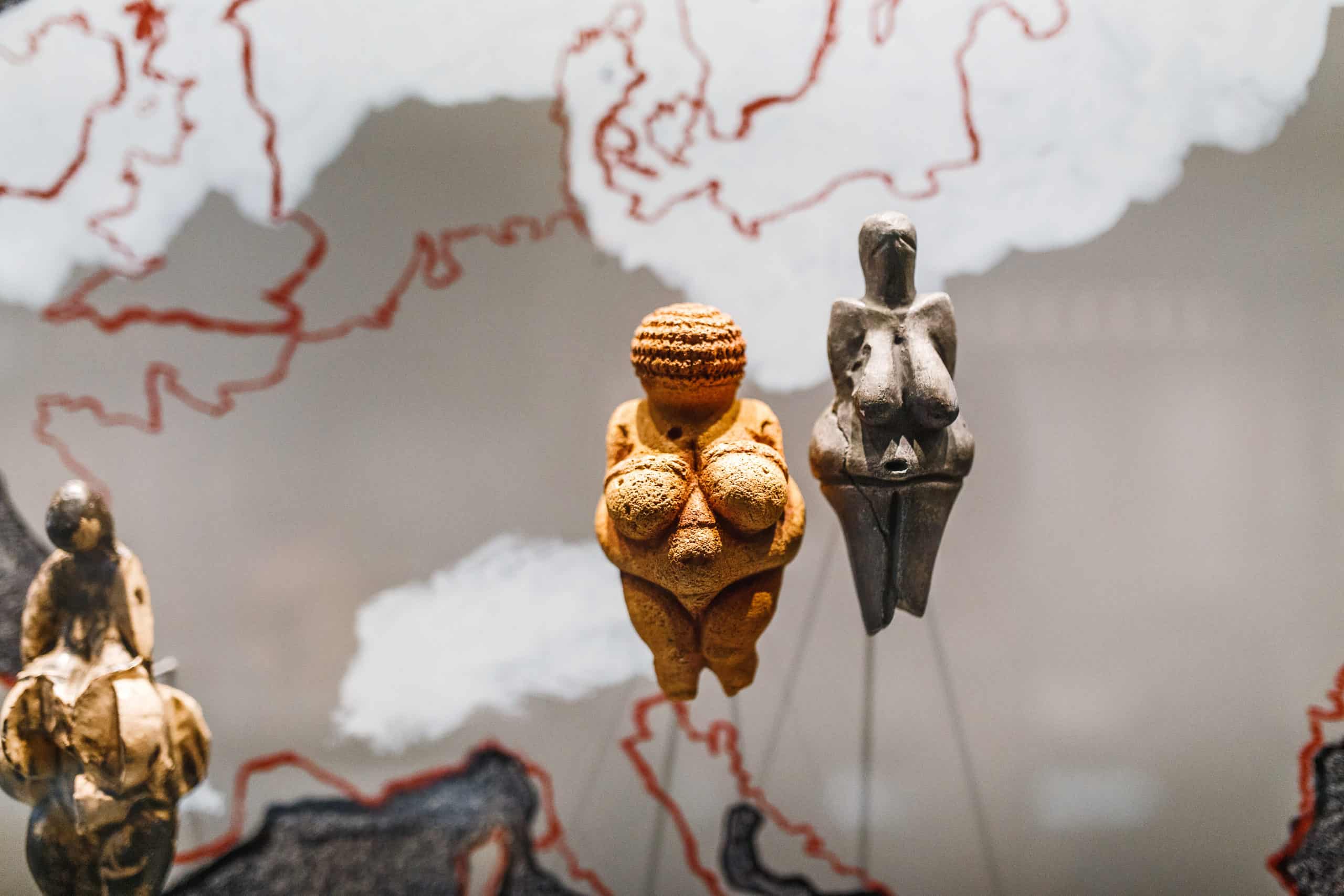The Roman goddess Venus has been a constant source of inspiration for countless artists throughout history. In addition to being manufactured, the product is constructed to create something beautiful. Despite its age, this 30,000-year-old artifact nevertheless enthralls.
There is much debate over the value that artists place on their creations. On the other hand, old relics provide a unique insight into how people lived during a period. When discussing a woman’s life in ancient times, the Venus figurines of the upper Paleolithic period are the most commonly referenced artworks. These statuettes are “the earliest known images of the human female form,” dating from 35,000 to 21,000 years ago. This little sculpture was dubbed “fertility sculpture” when it was discovered in the early 1900s and was first thought to be a fertility symbol. While this hypothesis has been around for a long time, historians, archaeologists, and other professionals in the field are still unaware of the sculpture’s portrayal, purpose, or origins, making it one of the most intriguing in the world.
There are many hypotheses about the Venus of Willendorf, and this page aims to examine them regarding this sculpture.
The Venus of Willendorf
In the absence of written records, art historians rely on artifacts as their main source of knowledge about prehistoric peoples. Is the Venus of Willendorf’s curvature a clue to the original meaning of Venus? The most visible elements of a woman’s anatomy are her reproductive and child-rearing organs. The Venus of Willendorf, also known as the Nude Woman, was found in the Austrian town of Willendorf in 1908. Oolitic limestone was used to create the Upper Paleolithic fertility goddess image. This prehistoric work of art begins a discussion about Neolithic women: what they were revered for, what was expected of them, and how the Woman of Willendorf reflects these characteristics. The statue depicts a nude woman. Despite the lack of a face, the figure’s crown is ornamented with a recurring motif, which might be a braided hairdo or a tiara design. To be sure, it’s fascinating to observe how the artist opted to depict her anatomy by exaggerating proportions and emphasizing reproductive and fertility traits. Many academics think the sculpture was intended to be a fertility figure or “Venus figurine” throughout antiquity due to its rounded hips and huge breasts.
Meanings and Interpretations
The Venus of Willendorf has been proven to be a piece of art with several hypotheses and proposed interpretations of this ancient work of art. Before attempting to analyze a work’s relevance or goals, it is necessary to grasp the historical context of the culture in which it was created.
Given the figure’s ancient origins, little is known or heard about the Venus of Willendorf or its cultural significance. The statue might also be a mother goddess, symbolizing good luck. “Venus” refers to the Roman goddess of love, beauty, sex, and fertility. The ancient Romans worshiped Venus, also known as Aphrodite, in Greek mythology. Several painters utilized her as a subject for their work at that time. The Venus of Willendorf predates Greco-Roman mythology by around 20 generations, making it an early Venus statue in comparison to Alexandros of Antioch’s Venus de Milo (150–124 BC).

Because it was initially considered that the Paleolithic artifact was a fertility symbol or deity in its natural state, it was given the name “Venus. “Pregnancy and childbirth are often shown by the figure’s huge breasts, broad hips, and bulging stomach, which all contribute to this. Many prehistoric works of art, including the majority of the 144 figurines associated with fertility that have been discovered in Europe and Asia, share the same qualities as the Venus figure. These characteristics were present during prehistoric eras such as the Stone Age and were associated with motherhood and procreation and were given high recognition at that time.
Interpretations
Archaeologists and historians have long accepted the theory that this Paleolithic piece of art portrays fertility. However, there have been emerging criticisms and discussions regarding this representation in the fields of art history and archaeology, leading to a re-evaluation of this theory. Generally, historians believe that these fertility goddess objects were utilized in rituals and cherished for their connections with fertility, femininity, and sensuality. According to some historians, the Venus of Willendorf was created by men as an aphrodisiac for their sexual pleasure. Archaeologist Paul Hurault built on this theory in 1864 after discovering an identical statue and giving it the name Vénus Impudique, a reference to the urge to engage in sex as opposed to the role of mother and reproduction.
The Woman Figure
Several researchers have stated that women of the time appeared in this shape, and this is a straightforward interpretation of the Venus sculptures’ figures. An alternative explanation would have been that the Venus miniatures represented an ideal female figure, emphasizing the importance of childbirth and good health. Another fascinating possibility is that the statuettes were self-portraits, with their exaggerated forms induced by their ability to perceive their reflection. Because of this, all of the figurines had no faces. According to this notion, women of the time had ample free time and the inclination to make art.
Without a doubt, the Venus of Willendorf teaches us far more than its little stature. The Venus of Willendorf is only one of the dozens of paleolithic figurines that might have represented fertility. Nonetheless, it has played a prominent role in the history of human art. Within the art world, the examination of the “Venus of Willendorf” is susceptible to numerous interpretations and ideas, with many academics having their viewpoints on the figure. Today, this fertility goddess statue may be seen as a refreshing portrayal of the feminine form, serving a positive role in the art world.
Photo: frantic00/Shutterstock
You might also like:
Support us!
All your donations will be used to pay the magazine’s journalists and to support the ongoing costs of maintaining the site.
Share this post
Interested in co-operating with us?
We are open to co-operation from writers and businesses alike. You can reach us on our email at [email protected]/[email protected] and we will get back to you as quick as we can.









